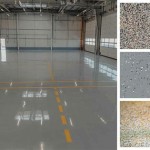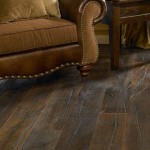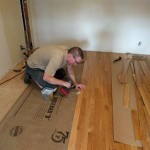The Cost to Install Vinyl Plank Flooring on Concrete
Vinyl plank flooring has gained immense popularity in recent years as a durable, stylish, and affordable alternative to traditional hardwood. The installation process, however, can vary depending on several factors. One crucial aspect is the subfloor, and installing vinyl plank flooring on concrete presents its own set of considerations and costs. This article delves into the factors that affect the cost of installing vinyl plank flooring on concrete, providing a comprehensive understanding of what to expect.
Factors Affecting the Cost of Vinyl Plank Flooring Installation on Concrete
Several factors influence the final cost of installing vinyl plank flooring on concrete, making it essential to consider these variables before embarking on the project. These factors include:
1. The Size of the Area
The first and foremost factor affecting the cost is the size of the area you want to cover with vinyl plank flooring. Naturallly, a larger area requires more materials and labor, driving up the overall cost. It is crucial to measure the space accurately to get an accurate estimate of the amount of flooring needed.
2. The Type of Vinyl Plank Flooring
The type of vinyl plank flooring chosen significantly impacts the cost. High-quality, luxury vinyl plank flooring (LVP) usually has a higher price tag than basic vinyl plank flooring. The thickness, wear layer, and design elements all contribute to the cost. Consider the desired look, durability, and features when selecting your preferred vinyl plank option.
3. The Complexity of the Installation
The complexity of the installation can also influence the cost. Factors like the presence of obstacles, uneven surfaces, or the need for special tools or techniques can increase the labor costs. For instance, installing vinyl plank flooring around stairs or in a room with many corners might require more time and expertise, increasing the overall price.
4. The Need for a Subfloor Preparation
Before installing vinyl plank flooring on concrete, you must check the condition of the subfloor. If the concrete is uneven, cracked, or has moisture issues, it requires preparation to ensure a smooth and stable surface. This can involve patching, leveling, and using a moisture barrier, all of which add to the overall cost.
5. Labor Costs
Labor costs are a significant part of the overall cost, and they can vary depending on the location, the experience of the installer, and the complexity of the project. In some cases, you might be able to install the vinyl plank flooring yourself, saving on labor costs. However, hiring a professional installer ensures a proper installation and can also potentially lower your insurance costs.
Key Points to Consider
Here are some key points to consider when planning the installation of vinyl plank flooring on concrete:
1. Subfloor Preparation
As mentioned earlier, the condition of the subfloor is critical for a successful installation. A smooth, flat, and dry concrete surface is essential for preventing issues like buckling, cracking, and premature wear. If your concrete subfloor requires preparation, you may need to consider additional costs for leveling, patching, and moisture barriers. Discuss these requirements with your installer to obtain an accurate estimate of the costs involved.
2. Underlayment
Underlayment is an essential component of vinyl plank flooring installation, particularly on concrete. It provides cushioning, sound insulation, and a moisture barrier. Depending on the type of vinyl plank flooring and the condition of the subfloor, different types of underlayment are available. You can choose from foam underlayment, cork underlayment, or rubber underlayment, each offering distinct benefits. Be sure to select an underlayment compatible with your vinyl plank flooring and the specific needs of your project.
3. Installation Methods
The chosen installation method also plays a role in the cost. You can choose between a floating installation method, where the planks click together and float above the subfloor, or a glue-down method, where the planks are adhered to the subfloor. The floating method is generally less expensive and easier to install, while the glue-down method offers greater durability and stability. Consider the pros and cons of each method, and consult with your installer to determine the best option for your project.
4. Additional Costs
Apart from the basic cost of materials and labor, you may encounter some additional costs during the installation process. These can include the cost of removing existing flooring, installing transition strips, and purchasing moldings. It's vital to factor in these additional costs to get an accurate estimate of the overall project cost.

Average Cost Of Vinyl Flooring Installation In 2024 Forbes Home

Fixr Com Cost To Install Vinyl Plank Flooring S

Cost To Install Vinyl Plank Flooring A Complete Guide For 2024 Forbes Home

Fixr Com Cost To Install Vinyl Plank Flooring S

Fixr Com Cost To Install Vinyl Flooring

How Much Does Vinyl Flooring Installation Cost 2024

Fixr Com Cost To Install Vinyl Flooring

How Much Does Vinyl Flooring Installation Cost 2024

Fixr Com Cost To Install Vinyl Flooring

Vinyl Plank Flooring Installation Cost In 2024
See Also







